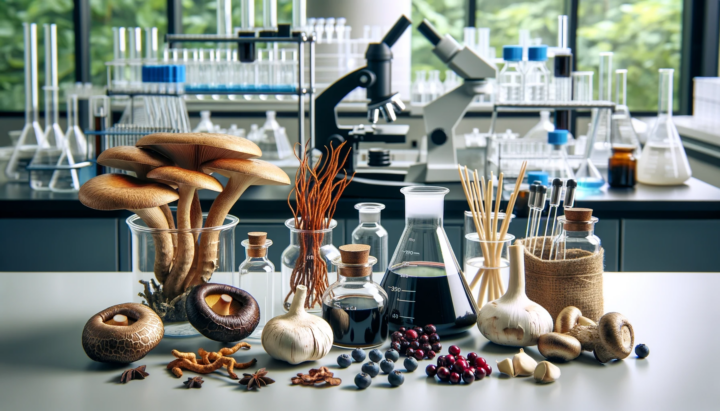Germanium is an element that we might describe as the hidden hero of the periodic table of elements. It is not as well known in everyday life as iron, magnesium, or potassium, for example, but its properties and uses in various fields are fascinating. This article takes you into the world of germanium, its history, properties, and many interesting applications that make it an important element in the modern world.
Germanium compounds are generally divided into organic and inorganic.
INORGANIC GERMANIUM
Inorganic germanium is a natural metallic element that occurs in minerals and rocks. It is mainly used in the industry and technology sectors, for example in the fields of optics, infrared, electronics, and photovoltaic cells. Inorganic germanium is characterized by the absence of bonds between carbon and hydrogen atoms, which distinguishes it from organic germanium.
ORGANIC GERMANIUM
Organic germanium is a chemical compound that contains carbon bonds in its structure. In 1955, Japanese professor Asai Kazuhiko became interested in medicinal plants with a long history of use, such as reishi, shiitake, and Korean ginseng, and in their contents. His meticulous research produced remarkable results: all these plants showed a special characteristic, namely a significant germanium content.
Germanium is a trace element that occurs in small amounts in several plants. Some plants that contain germanium include:
- Reishi (Ganoderma lucidum): The Ganoderma lucidum, commonly known as reishi, is a mushroom that has been traditionally used in Asian herbal medicine. It is known for its organic germanium content.
- Shiitake (Lentinula edodes): Another mushroom popular in Asian cuisine and traditional medicine and which contains germanium.
- Asian ginseng (Panax ginseng): Asian ginseng is a popular adaptogen and is known for its germanium content.
- Aloe vera: Although aloe vera is best known for its healing properties on the skin, it also contains small amounts of germanium.
- Lingonberries: These berries also contain a certain amount of germanium.
- Garlic: Garlic is another plant that contains trace amounts of germanium.
GERMANIUM SUPPLEMENTS FOR MEDICINAL PURPOSES
In 1967, Dr. Asai Kazuhiko succeeded in introducing a water-soluble organic germanium to the world called “Asaigermanium”. A few years later, he suffered from extreme fatigue and was unable to live a normal life as a healthy person. He therefore decided to take the risk and tested the effects of organic germanium on himself. After only ten days, he experienced a return of sufficient energy and was able to continue his active lifestyle.
With this success, he immediately established the Asai Germanium Research Institute with the aim of developing organic germanium supplements for medicinal purposes. This institute has now been researching Germanium for more than half a century.
Studies and research of organic germanium showed that its use produces no side effects, as Professor Asai Kazuhiko confirmed on his own body. In addition, organic germanium offers several advantages:
ANTIOXIDANT PROPERTIES
Organic germanium is known for its excellent antioxidant properties that help fight harmful free radicals in the body. This promotes a healthy ageing process and cell protection.
IMMUNITY SUPPORT
Organic germanium can help strengthen the immune system. Professor Asai previously observed that germanium plays a key role in plant growth and the maintenance of cellular integrity, and he predicted the same positive effects in humans.
ENERGY AND VITALITY
Professor Asai’s experience suggests that organic germanium can contribute to an increase in energy and vitality.
GERMANIUM CONTENT IN GIMMEXIN
Gimmexin syrup contains 25 mg of organic germanium per dose (5 ml).

